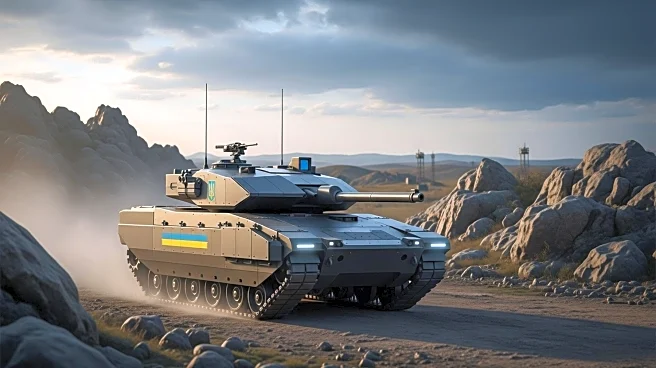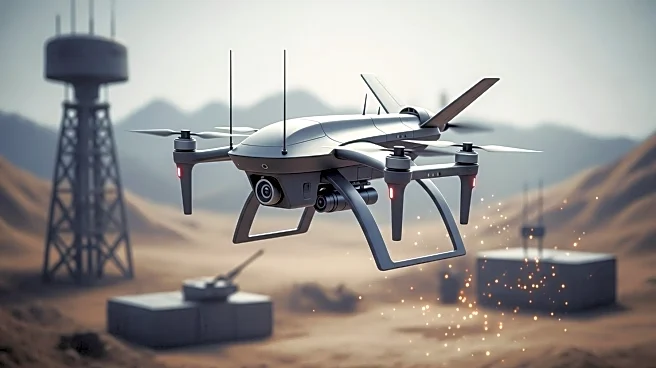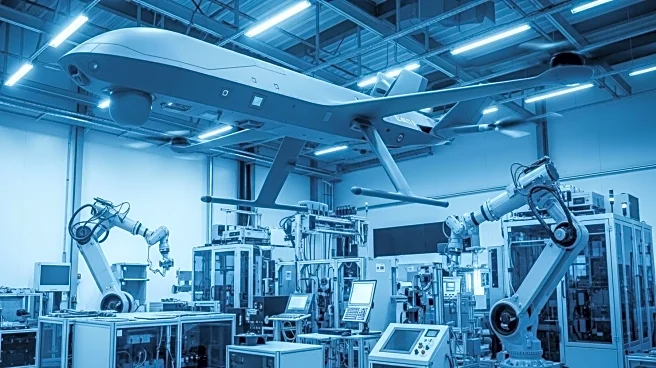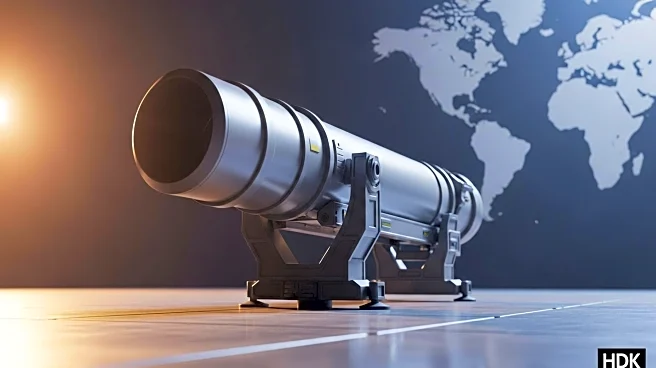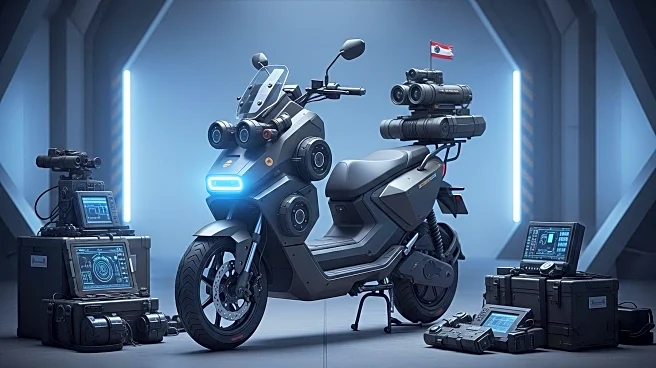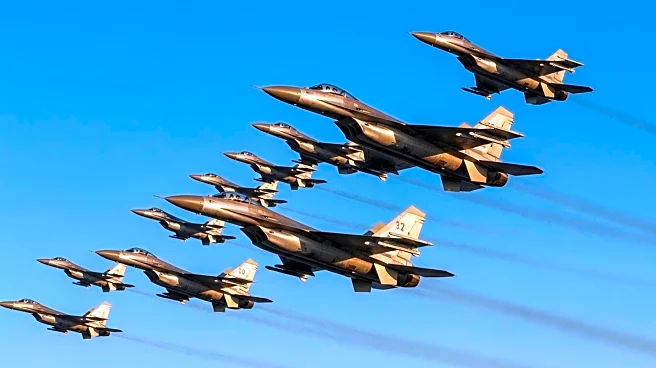What's Happening?
The Ukrainian army is increasingly deploying remote-controlled armored vehicles to perform various battlefield tasks, aiming to protect soldiers from life-threatening missions. These vehicles, referred to as 'robots on wheels,' are used to ferry supplies, clear mines, and evacuate the wounded or dead. The initiative comes as Ukraine faces a shortage of soldiers in a prolonged conflict with Russia. The vehicles, mostly manufactured by Ukrainian companies, range in cost from $1,000 to $64,000, depending on their capabilities. While remote-controlled vehicles are not new to warfare, Ukraine's extensive use of them is notable and could lead to advancements in military technology.
Why It's Important?
The deployment of remote-controlled vehicles by the Ukrainian army represents a significant shift in military strategy, emphasizing the protection of human life in conflict zones. This approach could influence other nations to adopt similar technologies, potentially transforming battlefield operations globally. The use of these vehicles reduces the risk to soldiers, allowing them to focus on strategic tasks rather than dangerous missions. However, the cost and vulnerability of these vehicles remain challenges, as they can be easy targets and expensive to replace. The ongoing conflict provides real-time feedback, which is used to improve newer models.
What's Next?
As the Ukrainian army continues to integrate remote-controlled vehicles into its operations, further advancements in technology and strategy are expected. The army is working on making these vehicles less vulnerable by adding protective features like grill-like cages and metallic rollers to detect mines. The feedback from the battlefield will likely lead to the development of more robust and efficient models. The success of this initiative could prompt other countries to explore similar technologies, potentially leading to a broader adoption of remote-controlled vehicles in military operations.
Beyond the Headlines
The use of remote-controlled vehicles in warfare raises ethical and legal questions about the role of technology in combat. As these machines become more advanced, the line between human and machine decision-making in military operations may blur, leading to debates about accountability and the rules of engagement. Additionally, the reliance on technology in warfare could shift military training and resource allocation, emphasizing technical skills over traditional combat training.

